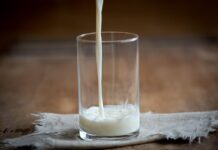STRUM, Wis. – Tom and Laurel Kieffer farm near the small rural community of Strum, south of Eau Claire, Wis. Like many other dairy farmers in western Wisconsin who graze their livestock, they mend fences, move animals, and milk twice a day in a modern parlor.
But, if you visit their farm or examine their financial records you will discover a few obvious breaks with tradition. Most importantly, their milk is in great demand and through their cooperative, customers are willing to pay an economically sustainable price of more than $60 per hundred pounds for their milk.
The other obvious difference you will notice is that Tom, Laurel and their family milk sheep.
Formed co-op. The Wisconsin Sheep Dairy Cooperative formed in 1996. The cooperative got a boost in 1998, when the University of Wisconsin’s Center for Cooperatives selected it as part of a USDA-funded project on co-op development.
The center worked with the co-op, providing technical assistance, facilitating strategic planning and developing a five-year plan. Since that time, the cooperative has received continued support from the center and has experienced steady growth.
“In recent years, we have sold the cooperative’s entire production of sheep milk every year,” Tom Kieffer said.
Demand is up. The Kieffers, in their mid-40s, started milking sheep in 1997 after being involved in lamb and wool production. He has been a board member of the cooperative for over four years and currently serves as its treasurer.
The Wisconsin co-op is the largest sheep dairy cooperative in North America. This year, for the first time, demand for milk has significantly outstripped production, Kieffer said.
“Although we are increasing our production per animal and adding additional ewes within our member-farms, we need to actively reach out to new producers to join us,” Kieffer added.
Young industry. The history of sheep dairying and cheese production in the United States is just over a decade old. Most sheep-milk cheese in this country is produced in small quantities in farmstead plants. Much of this production takes place in New England, Wisconsin and on the West Coast.
Products. Consumers are most familiar with Roquefort, an identity-preserved French blue cheese, popular in cooking or as a table cheese. But there are many others, including Manchego, Ossau-Iraty, Pecorino Romano, and traditional Feta.
The United States is now on the map as a source for world-class sheep milk cheese. Mary and Dave Falk, who farm near Grantsburg, Wis., have a small cheese plant on their farm. They were recognized by the American Cheese Society as “best of show” in its 2000 competition.
Falk’s Trade Lake cheeses are served in some of the best restaurants in America.
More recently, other plants in Wisconsin have entered the rapidly expanding area of producing and marketing sheep milk cheeses, as well as cheeses containing blends of sheep milk with cow or goat milk.
Over the past few years, with financial support from the Wisconsin Departments of Agriculture and Commerce, the cooperative has successfully diversified by adding sheep-milk cheese production.
Going for top quality. “Due to the value of the milk, sheep cheese is always going to be more expensive,” said Mark Kastel, a business development consultant who works for the co-op.
“We have learned from the marketplace that producing average-quality cheese will not build a sustainable market for our products. In competing with European imports, it is incumbent upon us to create world-class cheeses if we are to succeed.”
Some countries in Europe and the Middle East actually produce more fine cheese from sheep and goats’ milk than from cows’ milk.
Need more milk. The cooperative has begun an active campaign to recruit additional farmers. Most current co-op members have had a long term interest in lamb and wool production and, at some time, diversified into milking. Other co-op members have successfully made this their first venture into farming.
Now, the cooperative is also receiving interest from cow dairy producers who look at sheep milk production as a way to diversify and remain a family-scale operation.
“Just like farmers who milk cows, the common denominator for our members is a strong affection for the animals and the desire to operate a successful livestock enterprise,” according to Yves Berger, University of Wisconsin-Madison sheep-dairy research specialist.
A native of France, Berger has been helping sheep producers in this country improve their flocks as director of the sheep program at the UW Agricultural Research Station. There, as many as 280 sheep are milked daily during the season.
This year, co-op member farms will be milking anywhere from 30 to 300 animals a day. Members readily share ideas and knowledge with new members to help them get through the start-up phase.
“We’ve all been there,” said Tom Kieffer, who now milks more than 200 ewes per day.
Seasonal production. Co-op members milk from three to eight months throughout the year, depending on personal preference and the quality of genetics in their flocks.
Domestic breeds have average lactations of 90 to 120 days. Introduction of European genetics into the flock can increase the lactation period to as much as 275 days.
Year-round milking is optional with a year-round breeding scheme, though most members choose to go dry for at least a few months to catch up on other farm projects and prepare for lambing.
* * *
More details
EAU CLAIRE, Wis. – Farmers who are interested in investigating sheep dairy production on their farms are encouraged to contact the Wisconsin Sheep Dairy Cooperative at 715-877-2845 or ccsheep@aol.com.
Producers will also have an opportunity to learn more about dairy sheep production at the seventh Great Lakes Dairy Sheep Symposium in Eau Claire, Nov. 1-3.
The symposium will provide technical information on production, processing and marketing of sheep milk.
For more information about the symposium, visit the symposium Web site at www.uwex.edu/ces/animalscience/sheep/.









